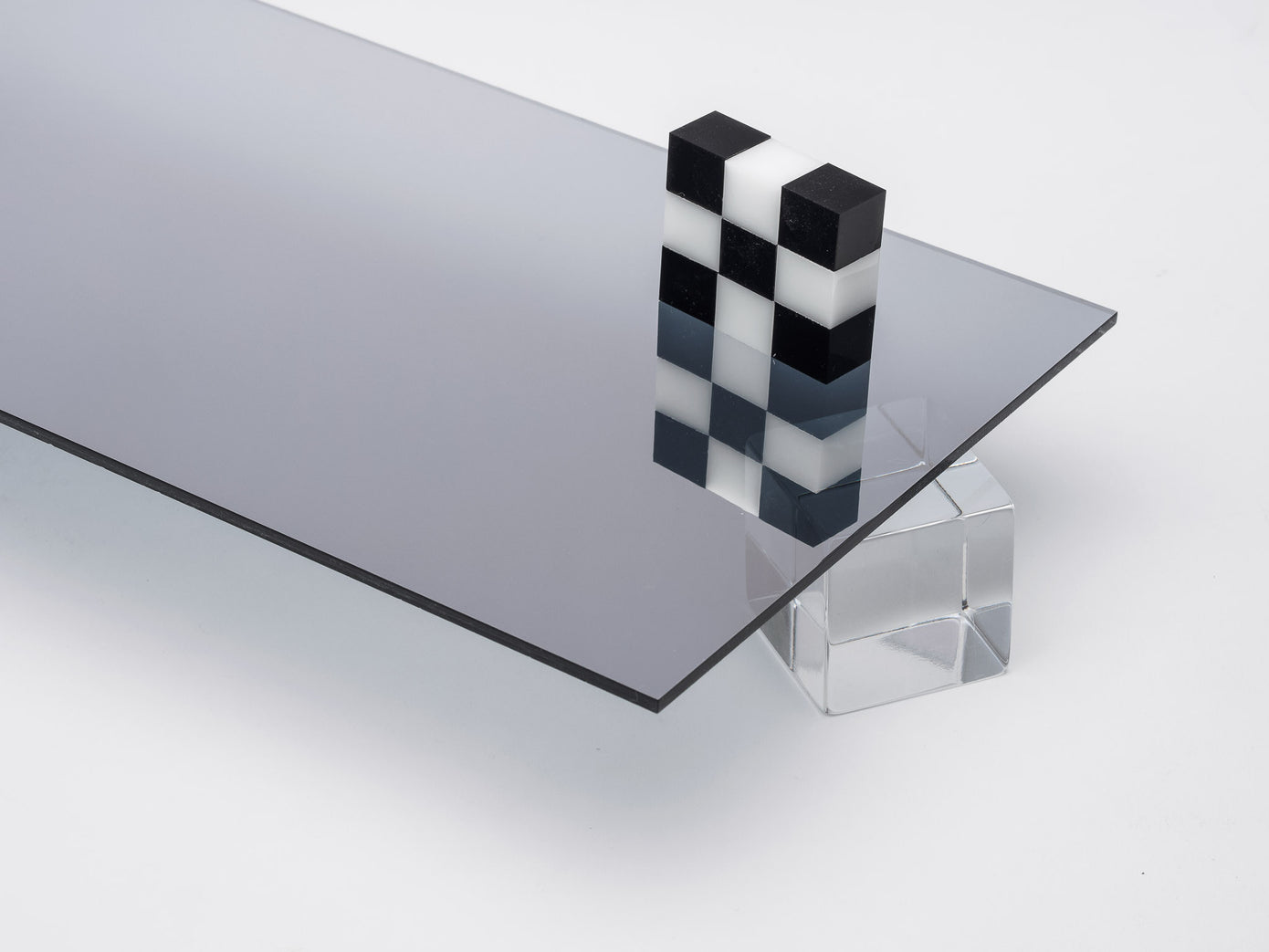

It rises to height of 35m and is tilted to an angle of 10 degrees. This partially cut ellipsoid measures 105m along its longer axis and 65m along its shorter axis.

The enveloping shell has a form derived from an ellipsoid. The complete structure of the shell stands away and apart from the support system of the internal structure and has a separate structural system of its own. The volume enclosed by this shell is whole and continuous unlike that of a conventional building. Doing away with conventional walls,windows or curtain walling, a gigantic enclosure shelters the entire internal structure. The uniqueness of the design lies in the enclosing shell created out of steel, glass and aluminium cladding. It houses the workspaces, offices, meeting rooms, other ancillary areas and services. This structure, with an elliptical footprint, is a conventional structure of reinforced cement concrete and brickwork.
LOOKTHROUGH MIRROR SOFTWARE
The internal built form consists of 1, 50,000 sq ft of usable floor space on five floors, designed to provide an environment conducive to the software development activity. It is a structure embodying the spirit of its users who are people working in the field of computers and software dealing with cutting edge technology a structure which understands this technology and speaks a similar hi-tech language. The concept having been realised by Construction Catalysers and the building is all set to become an icon reflecting the pride of all involved in its creation. The design for The Infosys Ellipsoid was especially challenging for the futuristic concept developed by Architect Hafeez Contractor for Infosys at Hinjwadi, Pune.

We are one of the UK's leading suppliers of bathroom goods for homes and businesses and offer more than 30,000 products in our online store, so it's fair to say if you need Bathroom Mirrors we have something for everyone, no matter the budget or style.Bringing the architect’s dream into reality with structural ingenuity and finesse is the bottom line of every brief that an architectural engineering firm deals with.
LOOKTHROUGH MIRROR BLUETOOTH
Fast forward to the 21st century and we now have illuminated mirrors with Bluetooth connectivity and an array of neat tricks to make life easier. As such, bathroom mirrors are found in almost every home in the UK and the world over. The actual process of creating mirrors would have been very expensive in the past but various technological innovations over time have made the whole process considerably more economical. Mirrors today are immensely popular items and prevalent throughout the home but in bygone eras, mirrors, particularly bathroom mirrors, would have been a very luxurious purchase and most likely only a viable purchase for the financial elite. This leap was discovered by Justus Von Liebig and his innovation can be seen as the catalyst for the creation of modern bathroom mirrors and those all around the home. It wasn't until 1835 that the chemical process for a metal coating was first applied to glass to produce a reflective surface. Whilst these options produced a reflection of sorts, it wouldn't have yielded results anything like the bathroom mirrors of today. However, around the Middle Ages, mirrors were simply convex bits of metal that had been highly polished. According to research, as long as 9000 years ago in Çatalhöyük, Turkey, Obsidian, which was highly regarded for its smooth finish was used for various things including mirrors. Bathroom Mirrors - The Middle Agesīathroom mirrors are taken for granted by homeowners today and they literally come in all shapes and sizes. Mirrors as we would recognise them today are created by coating glass with aluminium but this wasn't the case in the early stages of mirror production many centuries ago. To understand how we got from the rudimentary mirrors witnessed many centuries ago to the modern bathroom mirrors of today, it is important to look at the principle of how mirrors are actually made. It goes without saying that bathroom mirrors are a much more recent innovation than mirrors for general use as these can be traced back many centuries. Bathroom Mirrors - A Look Through History


 0 kommentar(er)
0 kommentar(er)
